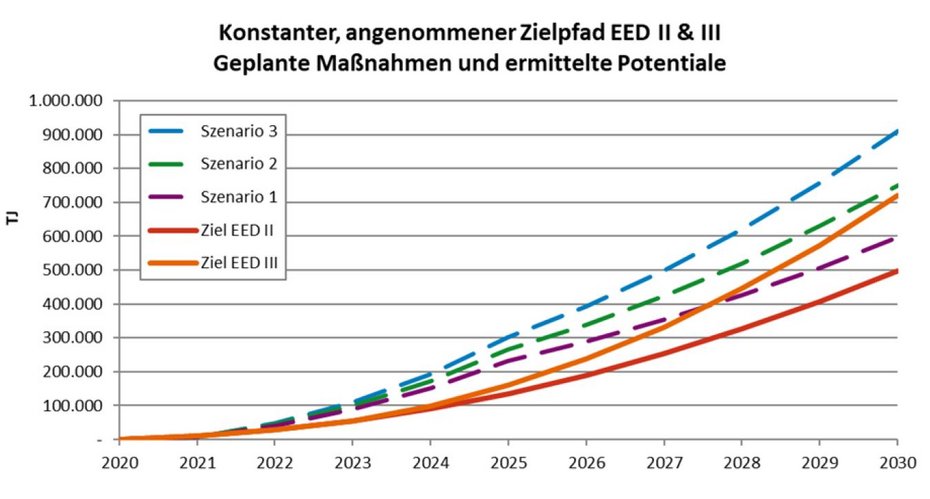
European Energy Efficiency Directive in Austria
Energy efficiencymeasures and potential
The focus of this study is the identification and analysis of (further) energy efficiency measures to comply with Article 7 of the EU Energy Efficiency Directive 2012/27/EU as amended by Directive 2018/2002/EU (EED II) for the commitment period 2021 to 2030. This sets out the cumulative final energy savings to be achieved by the Member States. The current recast of the Energy Efficiency Directive (keyword: EED III) as of May 2022 and the 2020-2024 government program have already been taken into account.
The priority for the AEA study was to identify and quantify new potential measures that could be considered for a possible obligation system. However, the study also includes existing measures from the previous commitment system (period: 2015 - 2020) and extrapolates their adapted effects up to the year 2030. Alternative strategic measures and their influence on target achievement up to 2030 are also taken into account in order to provide a complete picture of Austria's overall target achievement.In three scenarios, the final energy savings of the individual measures are extrapolated to the year 2030 using different annual implementation rates. The implementation rates in the individual scenarios are based on expert assessments and are discussed in detail in the study.The cumulative final energy savings by the end of 2030 are:
- A total of 598,249 TJ (= 598.249 PJ) in scenario 1,
- A total of 752,684 TJ (= 752.684 PJ) in scenario 2 and
- A total of 912,589 TJ (= 912.589 PJ) in scenario 3.
Measures already planned (existing measures, CO2 tax, 2020 stimulus package and 2021 stimulus package) account for the largest share of the cumulative final energy savings with 448,921 TJ (= 448.921 PJ) in scenario 1, 75.0 % in scenario 2 and 49.2 % in scenario 3.
The additional potential measures for final energy savings determined as part of this study achieve a cumulative value of 149,327 TJ (= 149.327 PJ) and 25.0 % in scenario 1, 303,762 TJ (= 303.762 PJ) and 40.4 % in scenario 2 and 463,667 TJ (= 463.667 PJ) and 50.8 % in scenario 3. The following measures were determined as additional potential: Building Automation and Control Systems (BACS), increasing the renovation rate of housing subsidies, hydraulic balancing, insulation of pipelines in industry, compressed air in industry, engine replacement, wastewater heat pumps, waste heat potential in industry, adiabatic cooling, load profile analysis, active mobility, home office, teleconferencing, electrification of trucks and buses.
Figure: Illustration of the cumulative target path EED II & EED III and the projected target achievements according to scenarios I to III
Source: Austrian Energy Agency

Downloads
Project data
| Client | BMK |
| Project management | Christian Praher |
| Projectteam |
Elisabeth Böck Christoph Link Günter Simader Gregor Thenius |
| Project duration | 2021 to 2022 |
Contact person

